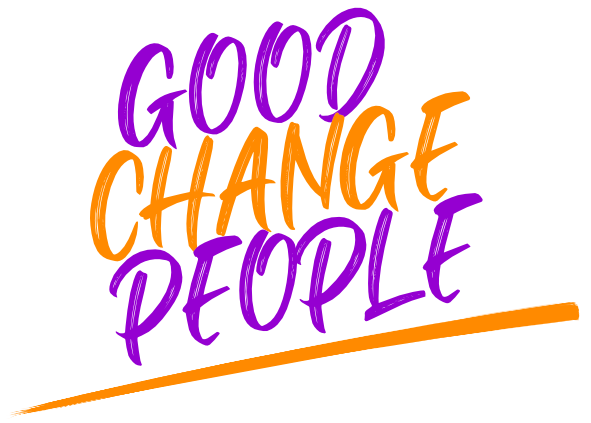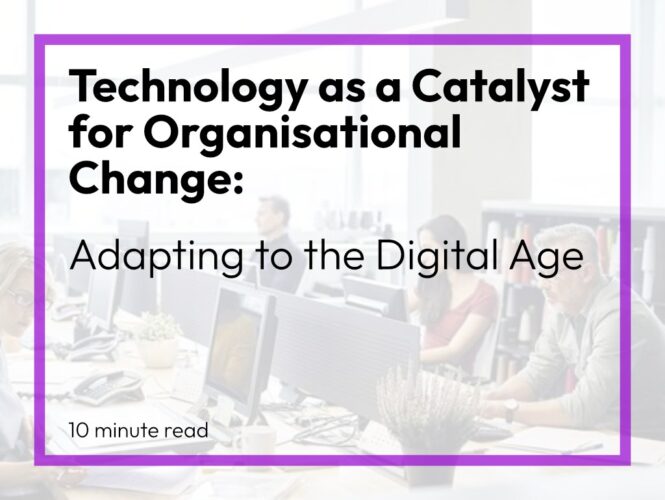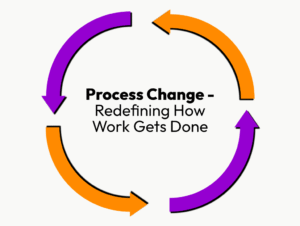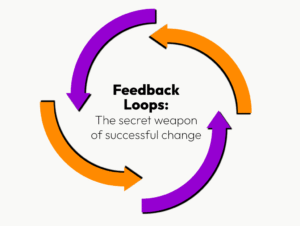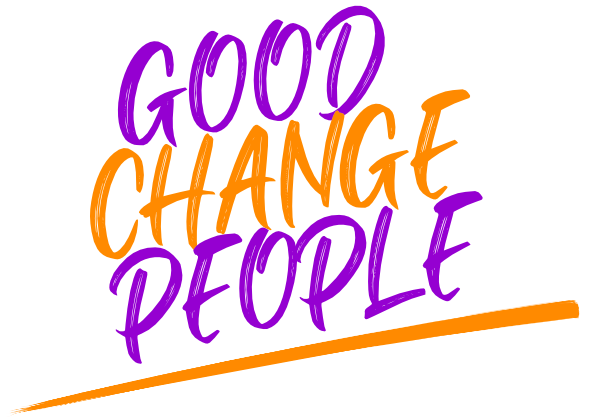The pace of technological advancement in the last 20 years has fundamentally transformed how organisations operate, compete, and evolve. What once took years to implement now happens in months, and the traditional models of change management are being challenged by the speed and complexity of digital transformation. Technology is no longer just a tool that supports business processes; it has become the primary catalyst driving organisational change across industries.
Keep reading for our tips on how to adapt to and thrive alongside digital transformation.
The New Reality of Technology-Driven Change
In today’s business environment, technological advancement is constant. Artificial intelligence (AI), cloud computing, automation, and data analytics are reshaping entire sectors overnight. This reality has forced organisations to reconceptualise their approach to change management. The linear, top-down change models of the past are giving way to more agile, iterative approaches that can keep pace with technological evolution.
For example, consider how remote work technologies transformed organisations virtually overnight during the pandemic. Companies that had spent years deliberating over flexible work policies suddenly had to implement comprehensive digital collaboration platforms within weeks. This acceleration demonstrated that when driven by technological capability and necessity, organisational change can happen far more rapidly than traditional change models suggested.
How Technology Reshapes Change Management Strategies
From Sequential to Parallel Implementation –
Traditional change management often followed a waterfall approach or plan; communicate, train, implement, and evaluate in sequence. Technology-driven change demands a more parallel approach where these phases overlap and inform each other continuously. Organisations now deploy pilot programs using cloud platforms, gather real-time feedback through analytics tools, and iterate rapidly based on user behaviour data.
Data-Driven Decision Making
Technology provides unprecedented visibility into organisational dynamics during change initiatives. Employee engagement platforms, productivity analytics, and communication tools generate continuous streams of data about how change is being received and adopted. This allows change managers to make evidence-based adjustments rather than relying on intuition or periodic surveys.
Personalised Change Experiences
Digital platforms enable organisations to tailor change experiences to individual employees or teams. Learning Management Systems (LMS) can deliver customised training paths, while collaboration tools can create targeted communication channels for different stakeholder groups. This personalisation increases engagement and reduces resistance to change.
GCP recently attended the CIPD Festival of Work in London, where a panel discussion on internal communications with the People Directors of Ryanair and Welcome Break emphasised the benefits of digital platforms for employees during periods of change. For them, digital platforms have created more ways to engage, accessibility which is constant and more inclusive, continuous feedback and a sense of community. All factors which make employees more receptive and welcoming to change initiatives.
Continuous Adaptation Over Fixed Endpoints
Technology-enabled organisations increasingly view change as an ongoing process rather than discrete projects with clear endpoints. DevOps methodologies, agile frameworks, and continuous deployment practices have created cultures of everlasting adaptation. Change management strategies must now support this continuous evolution rather than managing one-off transformations.
The Accelerated Timeline Challenge
One of the most significant impacts of technology on change management is the compression of timelines. Digital tools can be deployed rapidly, but human adaptation often requires more time. This creates a tension that change managers must navigate carefully.
Successful organisations are addressing this by investing heavily in change readiness capabilities. They build technological fluency into their workforce before specific changes are needed, create psychological safety for experimentation and failure, and develop change champions who can help teams navigate technological transitions more effectively.
Take a look at some of our other blog posts for a more in-depth guide on the role of leaders and managers for driving successful and long-lasting change.
Emerging Technologies and Future Change Patterns
Looking ahead, several technological trends will continue to reshape change management strategies. AI is beginning to predict change resistance and suggest personalised intervention strategies. Virtual and augmented reality platforms are creating immersive training experiences that accelerate skill development. Blockchain and decentralised technologies may fundamentally alter organisational structures and decision-making processes.
These emerging technologies will likely require even more sophisticated change management approaches. Organisations will need to develop capabilities for managing change that involves human-AI collaboration, distributed autonomous systems, and entirely new forms of work organisation.
Building Technology-Resilient Change Capabilities
The most successful organisations in the digital age are those that build change resilience into their core capabilities. This means developing teams that are comfortable with ambiguity, investing in technologies that support rapid experimentation, and creating organisational cultures that view technological change as an opportunity rather than a threat.
Key strategies to help build technological resilient change include;
- Establishing cross-functional teams that combine technological expertise with change management skills
- Implementing feedback systems that capture the human impact of technological changes
- Developing leaders who can navigate both technical complexity and human psychology.
The Human Element Remains Central
Despite the increasing role of technology in driving change, the human element remains crucial to successful transformation. Technology can accelerate change processes and provide better tools for managing them, but it cannot replace the need for empathy, communication, and psychological support during transitions.
The most effective change strategies in the digital age combine technological sophistication with deep understanding of human behaviour. They use digital tools to enhance human capabilities rather than replace human judgement in change processes.
Final Thoughts
Technology has fundamentally altered the landscape of organisational change, demanding new approaches to change management that are more agile, data-driven, and continuous than their predecessors. Organisations that successfully adapt their change management strategies to leverage technological capabilities while maintaining focus on human needs will be best positioned to thrive in an era of constant transformation.
The future belongs to organisations that can turn technological disruption into competitive advantage through superior change management capabilities. This requires not just adopting new technologies but fundamentally rethinking how change happens in digital-age organisations. The catalyst is clear; the question is whether organisations can evolve their change management practices fast enough to harness its power.
With a team that have been in change management for over a decade, GCP are well equip with the skills to help organisations succeed with digital transformations. If you would like to find out more about how we might be able to help your organisation book your free 30-minute consultation here!
